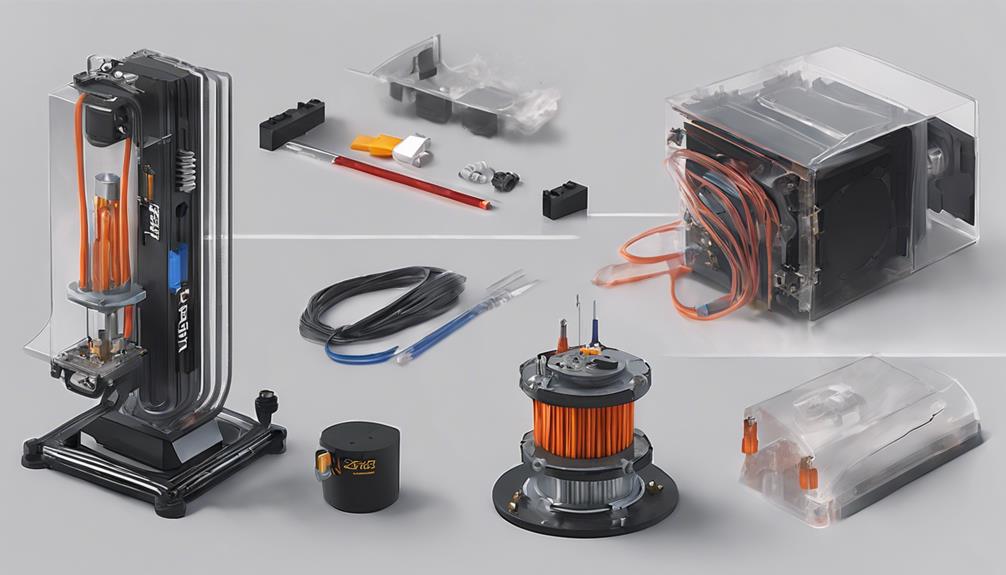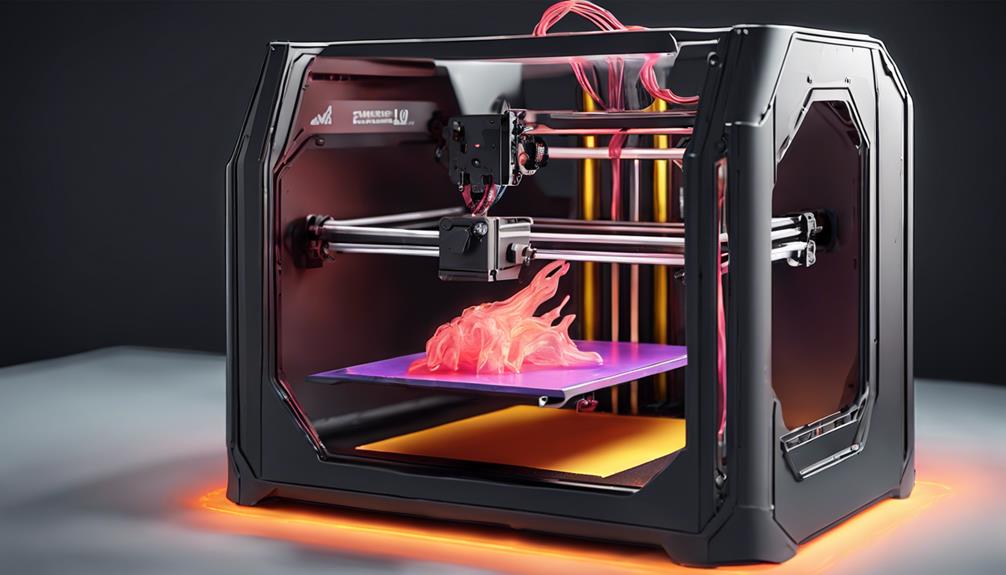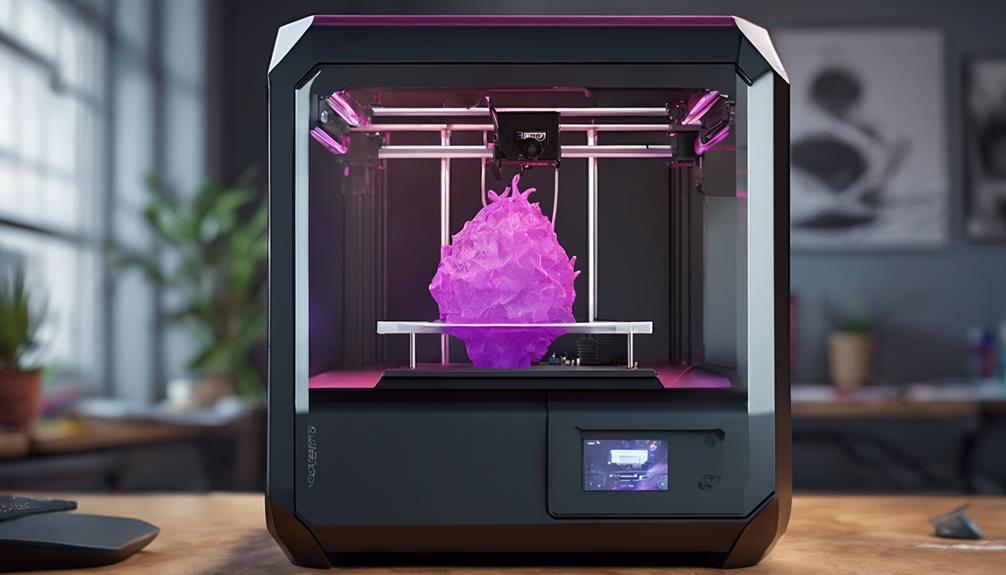If you're aiming to push the boundaries of your Ender 3 by exploring the capabilities of Polycarbonate and Nylon filaments, there are key upgrades and adjustments you need to keep in mind. Making strategic enhancements to your printer's hot end and thermistor is just the beginning. These modifications pave the way for greater temperature control and material versatility, but there's more to the puzzle. Explore the intricacies of firmware optimization, PID tuning, and other important factors that will elevate your printing experience with high-performance filaments on the Ender 3.
Hot End and Thermistor Upgrades

To fully maximize the capabilities of your Ender 3 for printing Polycarbonate and Nylon materials, upgrading the hot end and thermistor is essential.
By installing an all-metal hot end, like the MicroSwiss upgrade, you guarantee better heat resistance and durability needed for these high-temperature filaments.
Upgrading to a high-temperature thermistor allows your printer to accurately read and control the elevated temperatures required for Polycarbonate and Nylon printing.
These enhancements not only expand your printer's material compatibility but also improve the reliability and quality of your prints.
With these upgrades, you'll be well-equipped to tackle the challenges of printing with Polycarbonate and Nylon on your Ender 3.
Considerations for All-Metal Hot End
Considering the compatibility and quality of your all-metal hot end upgrade is crucial for tapping into the printing potential of your Ender 3. When selecting an all-metal hot end, keep in mind the following:
- Confirm proper mounting compatibility with your printer.
- Verify that the hot end is truly made of all-metal construction.
- Opt for reputable brands such as E3d, Microswiss, or Slice Engineering.
Firmware Optimization and PID Tuning

When upgrading your all-metal hot end on the Ender 3, optimizing the firmware and performing PID tuning is essential to ensuring accurate temperature control for advanced printing materials like Polycarbonate and Nylon. Adjust the hotend temperature limit above 315°C and configure temperature sensor settings correctly.
Utilize preset lists in the firmware for ease of use. Remember to run PID tuning after hardware changes to achieve precise temperature control. These adjustments are vital for successful printing with high-temperature filaments.
Properly tuned PID settings will help prevent temperature fluctuations, leading to more reliable prints with challenging materials like Polycarbonate and Nylon on your Ender 3.
Printing Surface and Bed Adhesion
For successful Polycarbonate and Nylon printing on your Ender 3, ensuring proper bed adhesion and utilizing the recommended Garolite print surface is crucial. Here are some tips to help you achieve ideal bed adhesion and successful prints:
- Clean your print surface thoroughly before each print to remove any dust or debris.
- Apply a thin layer of glue stick or hairspray on the print surface to enhance adhesion.
- Make sure your bed is leveled correctly to prevent any issues during printing.
Importance of Enclosure and Filament Dryer

To enhance the success of your Polycarbonate and Nylon prints on the Ender 3, incorporating an enclosure and filament dryer is vital. An enclosure helps maintain a stable printing environment by keeping the temperature consistent throughout the printing process. This is essential for materials like Polycarbonate and Nylon, which require higher temperatures and can be sensitive to fluctuations.
Additionally, a filament dryer is important for these hygroscopic filaments, as they tend to absorb moisture from the air, leading to poor print quality and potential clogs. Keeping your filament dry guarantees smoother extrusion and better overall print results.
Frequently Asked Questions
Can I Use Regular Glue Sticks for Bed Adhesion With Polycarbonate and Nylon Filaments?
Yes, you can use regular glue sticks for bed adhesion with polycarbonate and nylon filaments. They provide a simple and effective way to help your prints adhere securely to the bed during printing, ensuring successful outcomes.
Is It Necessary to Run PID Tuning After Upgrading to an All-Metal Hot End?
After upgrading to an all-metal hot end, running PID tuning is essential. It guarantees precise temperature control for peak performance. Make this adjustment to enhance your printing experience and maintain consistent results with your Ender 3.
Can I Use a Regular Glass Bed Instead of Garolite for Printing PC and Nylon?
When printing PC and Nylon, like a sturdy ship needing the right anchor, stick to Garolite bed for best results. Regular glass may not provide the necessary adhesion and heat resistance for successful prints.
Do I Need to Recalibrate the Z-Offset After Installing a New High-Temperature Thermistor?
After installing a new high-temperature thermistor, you need to recalibrate the z-offset. Guarantee proper bed leveling for best printing results. Calibration is essential to maintain the correct distance between the nozzle and bed surface.
Is It Possible to Print Polycarbonate and Nylon Without an Enclosure for the Ender 3?
Yes, printing polycarbonate and nylon without an enclosure on the Ender 3 is possible, but an enclosure is highly recommended for consistent results due to the need for a stable ambient temperature and prevention of warping issues.
Conclusion
Now that you've optimized your Ender 3 with a new hot end and thermistor, fine-tuned the firmware, and set up your enclosure and filament dryer, you're ready to unlock the full potential of printing with Polycarbonate and Nylon.
Say goodbye to failed prints and hello to high-quality, reliable creations. With these enhancements in place, your Ender 3 is now a powerhouse for handling advanced filaments with ease.
Get ready to elevate your 3D printing game to the next level!